O jednom pokuse rozšíriť predmet logiky
V stati [9] I. Hanzel kritizoval moju poznámku o Fregeho neskoršom príklone k intenzionálnemu chápaniu pojmov, ktorú som neuvážene pripojil k svojmu článku [2] (387 alebo [3], 26).
More...We kindly inform you that, as long as the subject affiliation of our 300.000+ articles is in progress, you might get unsufficient or no results on your third level or second level search. In this case, please broaden your search criteria.
V stati [9] I. Hanzel kritizoval moju poznámku o Fregeho neskoršom príklone k intenzionálnemu chápaniu pojmov, ktorú som neuvážene pripojil k svojmu článku [2] (387 alebo [3], 26).
More...
Každý človek je determinovaný historicky, svojou spoločenskou príslušnosť'ou; existencialisti hovoria, že osud ho vrhá do určitej konkrétnej situácie.
More...
Vo 4. čísle H. ročníka Organonu F vystúpil na obranu vývinovej teórie pojmov (ďalej len VTP) už piaty obhajca.
More...
V 1. čísle II. ročníka Organonu F bol uverejnený monologický dialóg [2], ktorým V. Černík obnovil polemickú diskusiu o vývine pojmov predčasne prerušenú koncom roka 1992.' Je to dialóg s fiktívnym partnerom P. Amorejom preto monologický v ktorom každý čitateľ oboznámený so spomenutou diskusiou spozná môjho názorového dvojníka, obhajujúceho zväčša myšlienky, ktoré som zastával v polemike.
More...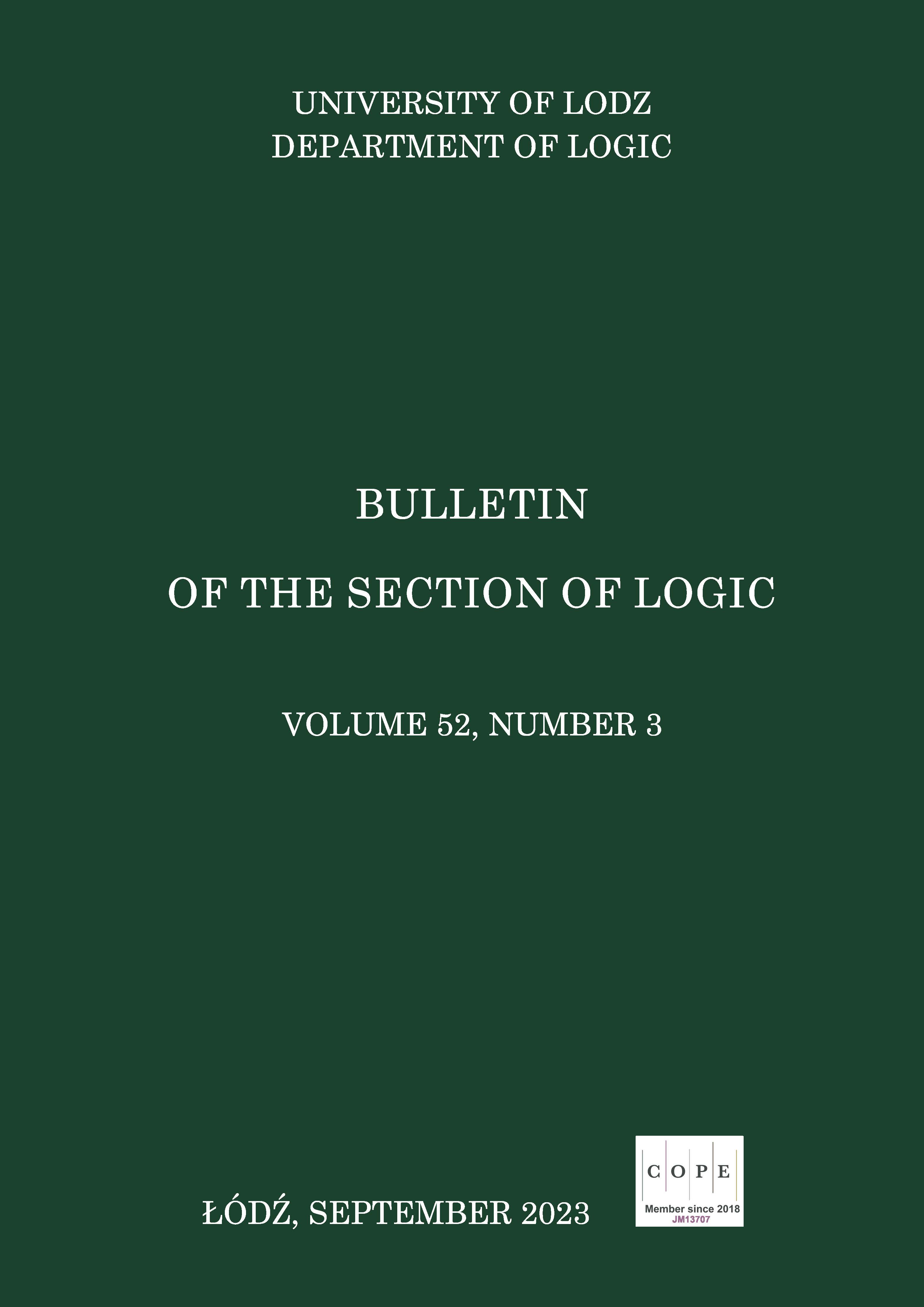

In a recent paper, under the auspices of an unorthodox variety of bilateralism, we introduced a new kind of proof-theoretic semantics for the base modal logic \(\mathbf{K}\), whose values lie in the closed interval \([0,1]\) of rational numbers [14]. In this paper, after clarifying our conception of bilateralism – dubbed “soft bilateralism” – we generalize the fractional method to encompass extensions and weakenings of \(\mathbf{K}\). Specifically, we introduce well-behaved hypersequent calculi for the deontic logic \(\mathbf{D}\) and the non-normal modal logics \(\mathbf{E}\) and \(\mathbf{M}\) and thoroughly investigate their structural properties.
More...
In bilateral logic formulas are signed by + and –, indicating the speech acts assertion and denial. I argue that making an assumption is also speech act. Speech acts cannot be embedded within other speech acts. Hence we cannot make sense of the notion of making an assumption in bilateral logic. Attempts to solve this problem are considered and rejected.
More...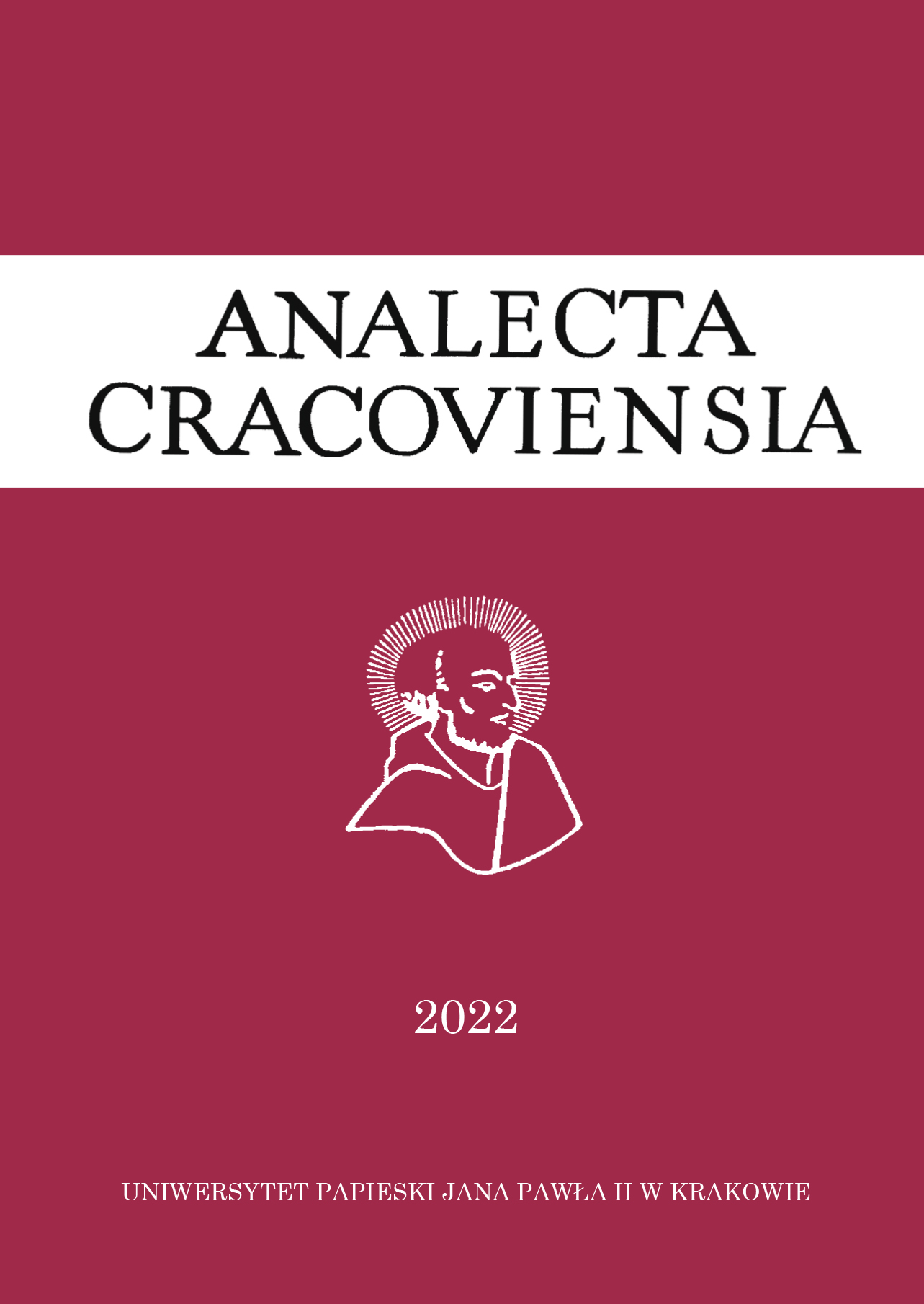
This paper presents a logical concept of probability which seems to be obvious, as it is, but the author is not aware of any elaboration of a developed studies on the issue or of any special philosophical application of it. Such a probability of the formula A, of the language of the propositional logic, is the quotient of the number of Boolean valuations of formula A of the classical propositional calculus, which takes the logical value 1, to the number of all Boolean valuations of such a formula A. An application of this concept of logical probability to the solution of the Linda problem is given.
More...
A many-valued modal logic, called linear abelian modal logic \(\rm {\mathbf{LK(A)}}\) is introduced as an extension of the abelian modal logic \(\rm \mathbf{K(A)}\). Abelian modal logic \(\rm \mathbf{K(A)}\) is the minimal modal extension of the logic of lattice-ordered abelian groups. The logic \(\rm \mathbf{LK(A)}\) is axiomatized by extending \(\rm \mathbf{K(A)}\) with the modal axiom schemas \(\Box(\varphi\vee\psi)\rightarrow(\Box\varphi\vee\Box\psi)\) and \((\Box\varphi\wedge\Box\psi)\rightarrow\Box(\varphi\wedge\psi)\). Completeness theorem with respect to algebraic semantics and a hypersequent calculus admitting cut-elimination are established. Finally, the correspondence between hypersequent calculi and axiomatization is investigated.
More...
Jaśkowski's discussive (discursive) logic D2 is historically one of the first paraconsistent logics, i.e., logics which 'tolerate' contradictions. Following Jaśkowski's idea to define his discussive logic by means of the modal logic S5 via special translation functions between discussive and modal languages, and supporting at the same time the tradition of paracomplete logics being the counterpart of paraconsistent ones, we present a paracomplete discussive logic D2P.
More...
Regions-based theories of space aim—among others—to define points in a geometrically appealing way. The most famous definition of this kind is probably due to Whitehead. However, to conclude that the objects defined are points indeed, one should show that they are points of a geometrical or a topological space constructed in a specific way. This paper intends to show how the development of mathematical tools allows showing that Whitehead’s method of extensive abstraction provides a construction of objects that are fundamental building blocks of specific topological spaces.
More...
The main goal of this paper is to introduce the notion of stabilizers in \(L\)-algebras and develop stabilizer theory in \(L\)-algebras. In this paper, we introduced the notions of left and right stabilizers and investigated some related properties of them. Then, we discussed the relations among stabilizers, ideal and co-annihilators. Also, we obtained that the set of all ideals of a \(CKL\)-algebra forms a relative pseudo-complemented lattice. In addition, we proved that right stabilizers in \(CKL\)-algebra are ideals. Then by using the right stabilizers we produced a basis for a topology on \(L\)-algebra. We showed that the generated topology by this basis is Baire, connected, locally connected and separable and we investigated the other properties of this topology.
More...
In this paper, considering \(L\)-algebras, which include a significant number of other algebraic structures, we present a definition of modules on \(L\)-algebras (\(L\)-modules). Then we provide some examples and obtain some results on \(L\)-modules. Also, we present definitions of prime ideals of \(L\)-algebras and \(L\)-submodules (prime \(L\)-submodules) of \(L\)-modules, and investigate the relationship between them. Finally, by proving a number of theorems, we provide some conditions for having prime \(L\)-submodules.
More...
The article is devoted to the study of the problem of the relationship between logic and philosophy in the historical-philosophical context and at the current stage of the development of science. Features of the development of traditional and classical formal and non-classical informal logic, corresponding metalogical argumentation are considered. The stage of the formation of philosophical logic is determined, conclusions are drawn regarding the methodological significance of philosophical logic for the development of philosophical knowledge.
More...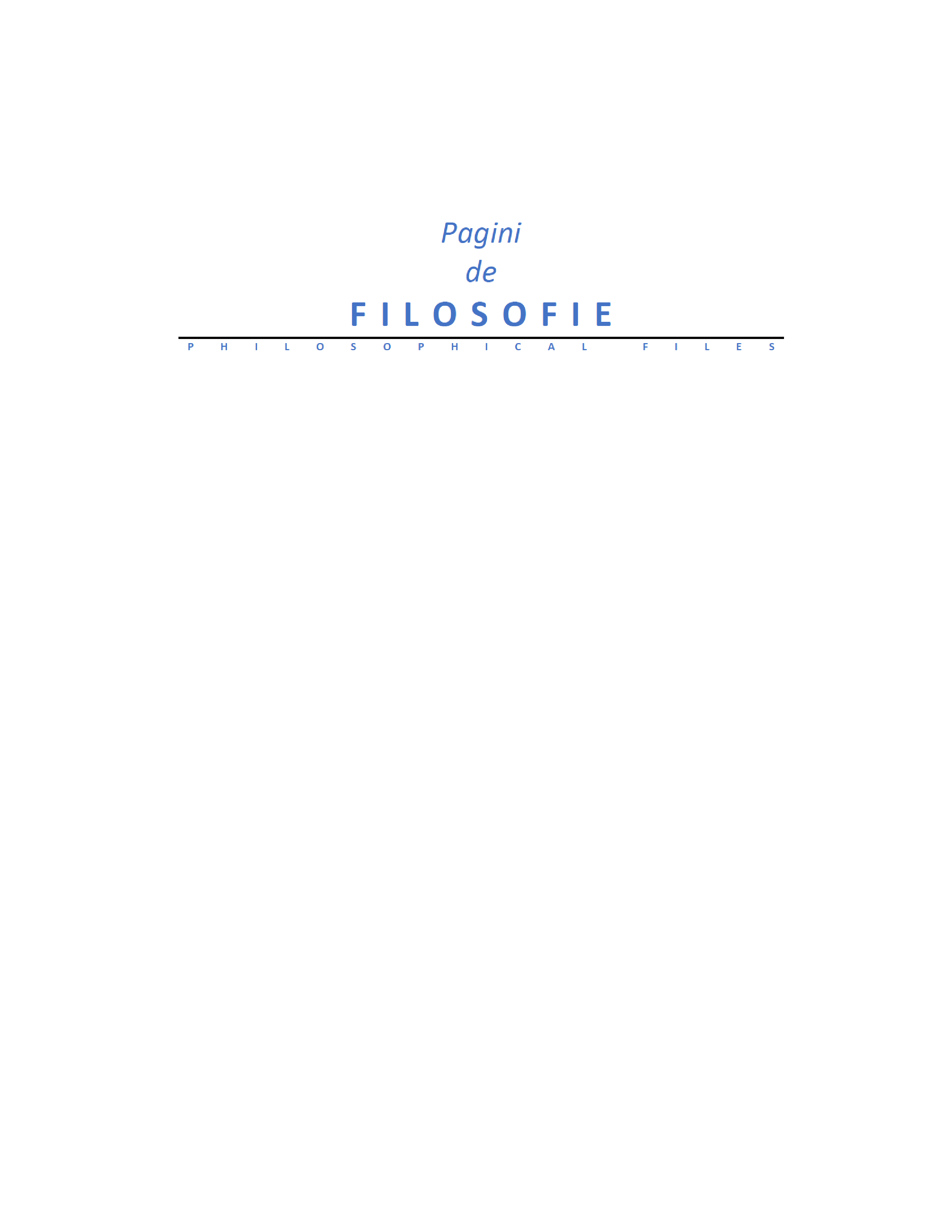
The theory (or logic) of con-cept, one of the basic theories of classical formal logic, has been replaced in modern logic by predicate theory. The two do not exactly overlap, and the question that arises is whether the old theory of the concept cannot be revisited with the means of modern logic to be updated and adapted? For this purpose, I reviewed the contributions of G. Frege and R. Carnap in the matter of the concept, after which I tried to develop a new definition that could then be developed into a logical theory of the concept. In all these attempts I took into account the Fregean principle of separating the logical from the psychological, the objective from the subjective. The new defini-tion/theory gives us the possibility of a clearer demarcation between concept, preconcept and pseudoconcept, which, either in science or in current speech, are not very well demarcated.
More...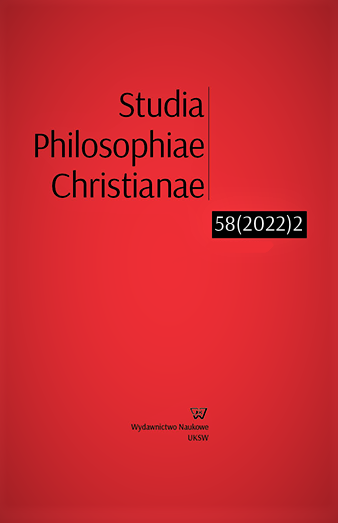
In this paper, I attempt to address some of the themes of Ludwig Wittgenstein’s Tractatus logico-philosophicus with the aim of their deconstructionist interpretation. My analysis is based on David Gunkel’s book Deconstruction (MIT Press 2021). Based on some of its findings, I show how the Tractatus allows deconstruction and its practice to be thought. I show that the graphic structure of signs is crucial for the young Wittgenstein’s analysis and that it justifies the metaphysical findings in favor of which he argues.
More...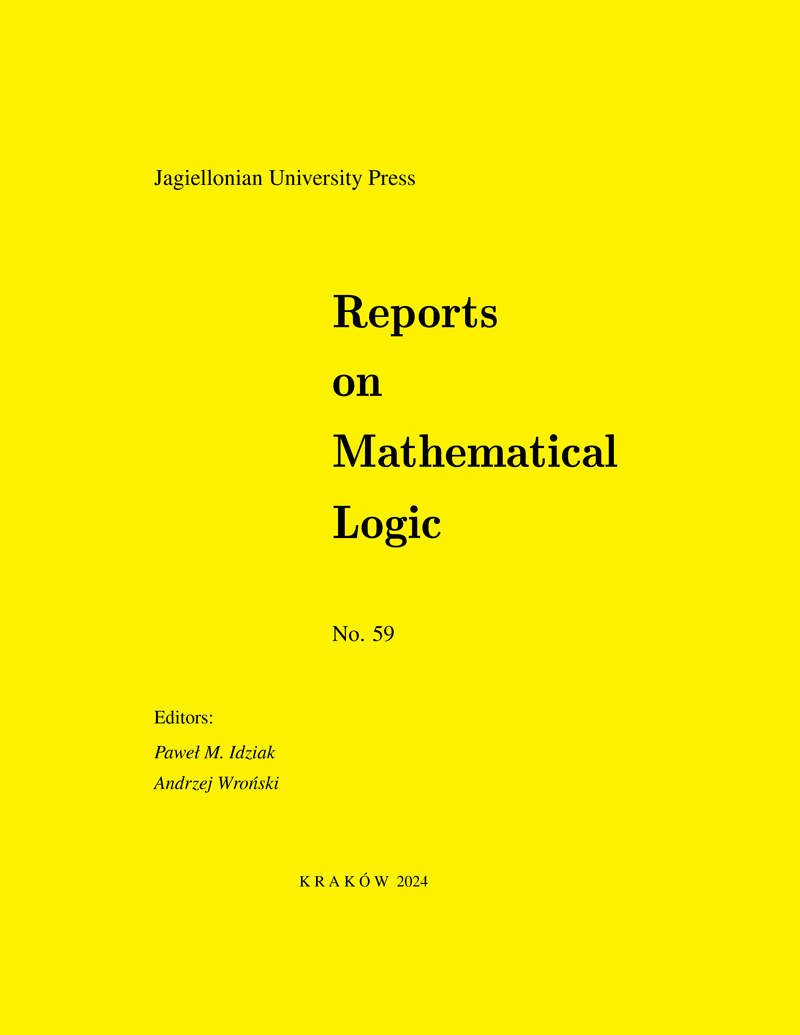
This paper studies effective aspects of semiperfect rings from the standpoint of reverse mathematics. Based on first-order Jacobson radicals of rings, we define a ring R with the Jacobson radical Jac(R) to be semiperfect if the quotient ring R/Jac(R) is semisimple, and idempotents of the quotient ring can be lifted to R. Using elementary matrix operations in linear algebra, we show that RCA0 proves a characterization of semiperfect rings in terms of idempotents of rings. Semiperfect rings are generalizations of semisimple rings and local rings, and semiperfect rings R with R/Jac(R) simple are isomorphic to matrix rings over local rings. Based on the effective characterization of semiperfect rings via idempotents, we prove the structure theorem of semiperfect rings R with R/Jac(R) simple in RCA0. Left perfect rings or right perfect rings are always semiperfect. Finally, we provide a proof for the structure theorem of one-sided perfect rings R with R/Jac(R) simple in WKL0.
More...
In [S. Celani and L. Cabrer. Duality for finite Hilbert algebras. Discrete Math., 305(1-3):74{99, 2005.] the authors proved that every finite Hilbert algebra A is isomorphic to the Hilbert algebra HK(X) = {w ⇒ i v : w ∈ K and v ⊆ w}, where X is a finite poset, K is a distinguished collection of subsets of X, and the implication ⇒i is defined by: w ⇒i v = {x ∈ X : w ∩ [x) ⊆ v}, where [x) = {y ∈ X : x ≤ y.} The Hilbert implication on HK(X) is the usual Heyting implication ⇒ i (as just defined) given on the increasing subsets. In the same article, Celani and Cabrer extended this representation to a full categorical duality. The aim of the present article is to obtain an algebraic characterization of the Hilbert algebras HK(X) for all structures (X, ≤, K) defined by Celani and Cabrer but not necessarily finite. Then, we shall extend this representation to a full dual equivalence generalizing the finite setting given by Celani and Cabrer.
More...
This paper addresses three kinds of binary operational semantics, called here Urquhart-style semantics, for basic substructural logics. First, we discuss the most basic substructural logic GL introduced by Galatos and Ono and its expansions with structural axioms and their algebraic semantics. Next, we provide one kind of Urquhart-style semantics, whose frames form the same structures as algebraic semantics, for those substructural logics and consider powers and limitations of this kind of semantics in substructural logic. We then introduce another kind of Urquhart-style semantics, whose canonical frames are based on prime theories, for DL, the GL with distributivity, and some of its non-associative expansions and extend it to the semantics with star operations for negations. Similarly, we consider powers and limitations of these two kinds of semantics in substructural logic.
More...
We show that a variety with J´onsson terms t1, . . . , tn–1 has directed J´onsson terms d1, . . . , dn–1 for the same value of the indices, solving a problem raised by Kazda et al. Refined results are obtained for locally finite varieties.
More...